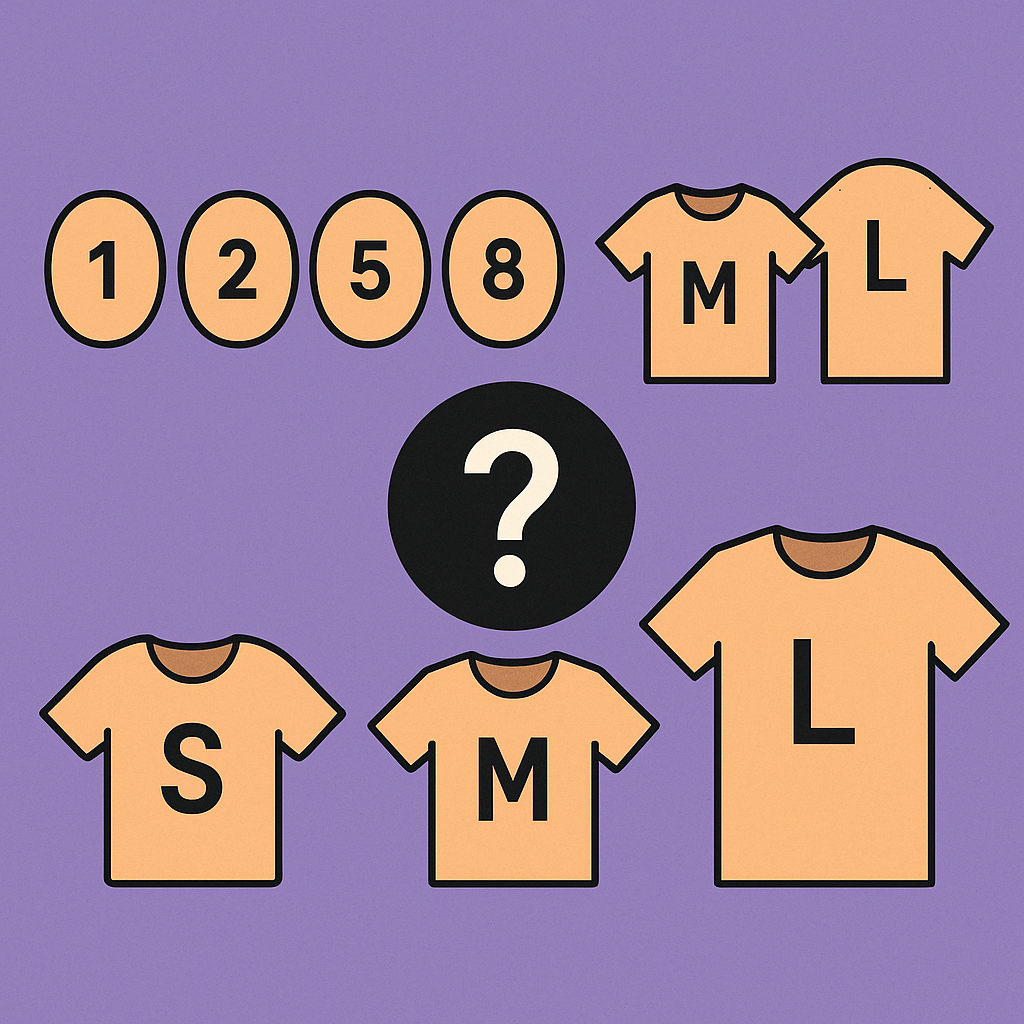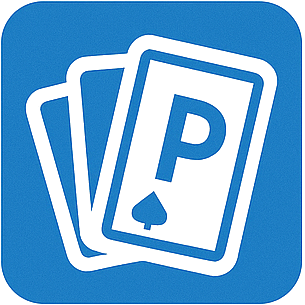
When it comes to Agile estimation, one size doesn’t fit all—ironically, not even the T-Shirt sizes. From Fibonacci to custom scales, choosing the right Planning Poker deck can make or break your team’s ability to estimate work accurately, quickly, and (dare we say) enjoyably.
So how do you pick the best scale for your team? Let’s explore the two most popular estimation methods—Fibonacci and T-Shirt sizing—and help you find the one that fits like a glove (or maybe a Large tee).
🧮 What’s the Deal With Fibonacci?
The Fibonacci sequence (1, 2, 3, 5, 8, 13, 21…) might bring back math class nightmares, but in Agile, it serves a beautiful purpose: introducing uncertainty as complexity grows. The further along the sequence you go, the less precise the estimate—just like real life.
Why Use It?
Great for mature teams who understand story points and want to estimate complexity, not time.
Forces you to say: “Is this a 5 or an 8?” instead of splitting hairs between 6 and 7.
The jump in numbers encourages important conversations when stories seem too big.
💡 Want to know more about story points vs. time-based estimates? Check out this guide on why Planning Poker works.
👕 T-Shirt Sizes: Estimation That Fits Everyone
Sometimes, you don’t need numbers—you just need vibes. That’s where T-Shirt sizing comes in: XS, S, M, L, XL (and XXL if you’re brave). It’s fuzzy, fast, and friendly.
Why Use It?
Perfect for beginners or non-technical teams, where precision isn’t critical yet.
Easier to introduce across cross-functional teams (marketing, design, etc.).
Less intimidating than numbers, more intuitive than sequences.
🏁 Many teams start with T-Shirt sizes and eventually evolve into Fibonacci once they’re more comfortable with Agile concepts.
🤔 So Which One Should You
Use?
Let’s break it down:
Fibonacci or T-Shirt Sizes? Choosing the Right Estimation Scale for Your Agile Team
When it comes to Agile estimation, one size doesn’t fit all—ironically, not even the T-Shirt sizes. From Fibonacci to custom scales, choosing the right Planning Poker deck can make or break your team’s ability to estimate work accurately, quickly, and (dare we say) enjoyably.
So how do you pick the best scale for your team? Let’s explore the two most popular estimation methods—Fibonacci and T-Shirt sizing—and help you find the one that fits like a glove (or maybe a Large tee).
🧮 What’s the Deal With Fibonacci?
The Fibonacci sequence (1, 2, 3, 5, 8, 13, 21…) might bring back math class nightmares, but in Agile, it serves a beautiful purpose: introducing uncertainty as complexity grows. The further along the sequence you go, the less precise the estimate—just like real life.
Why Use It?
Great for mature teams who understand story points and want to estimate complexity, not time.
Forces you to say: “Is this a 5 or an 8?” instead of splitting hairs between 6 and 7.
The jump in numbers encourages important conversations when stories seem too big.
💡 Want to know more about story points vs. time-based estimates? Check out this guide on why Planning Poker works.
👕 T-Shirt Sizes: Estimation That Fits Everyone
Sometimes, you don’t need numbers—you just need vibes. That’s where T-Shirt sizing comes in: XS, S, M, L, XL (and XXL if you’re brave). It’s fuzzy, fast, and friendly.
Why Use It?
Perfect for beginners or non-technical teams, where precision isn’t critical yet.
Easier to introduce across cross-functional teams (marketing, design, etc.).
Less intimidating than numbers, more intuitive than sequences.
🏁 Many teams start with T-Shirt sizes and eventually evolve into Fibonacci once they’re more comfortable with Agile concepts.
🤔 So Which One Should You Use?
Let’s break it down:
Team Profile | Best Fit | Why? |
Agile beginners | T-Shirt Sizes | Simple, intuitive, easy to get started with |
Experienced dev teams | Fibonacci | More precision, better for sprint planning |
Cross-functional teams | T-Shirt Sizes | Everyone speaks “shirt” more than “13 points.” |
Teams focused on velocity | Fibonacci | Aligns with metrics like average sprint velocity |
Remote teams | Either (but keep it visual!) | Use tools that support both and keep cards easy to understand |
Still can’t decide? We wrote a full breakdown of Planning Poker decks to help you explore other custom options too—yes, even emojis and dog breeds made the list 🐶.
🙋♀️ Can We Mix and Match?
Absolutely. Some teams start by estimating in T-shirt sizes during grooming, then convert those to Fibonacci numbers during sprint planning. Others assign numeric ranges to shirt sizes (e.g., S = 2-3, M = 5, L = 8-13). The trick is to stay consistent and make sure your team understands the system.
If everyone agrees that “Large” means “We might cry if we take this in the next sprint,” you’re good.
Final Thoughts
There’s no “best” estimation scale—just the one that helps your team collaborate, communicate, and plan better. Whether you go with Fibonacci’s nerdy charm or T-Shirt sizing’s comfy fit, what matters most is consistency, shared understanding, and the conversations that follow.
And if things ever get heated during a sizing debate, just remember:
“When in doubt, go Medium. Like life, it’s usually the safest bet.”😄
